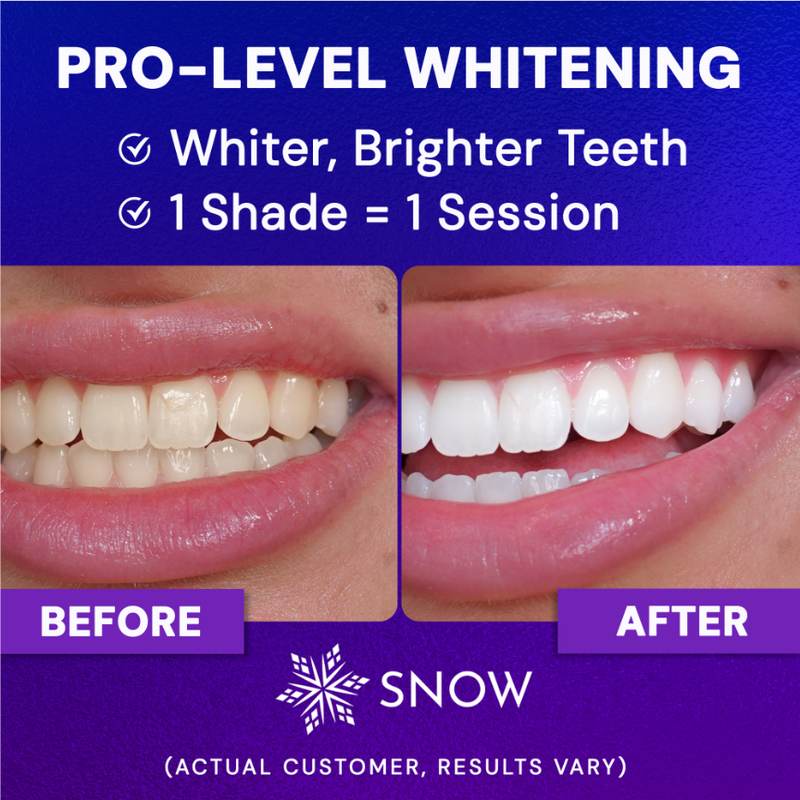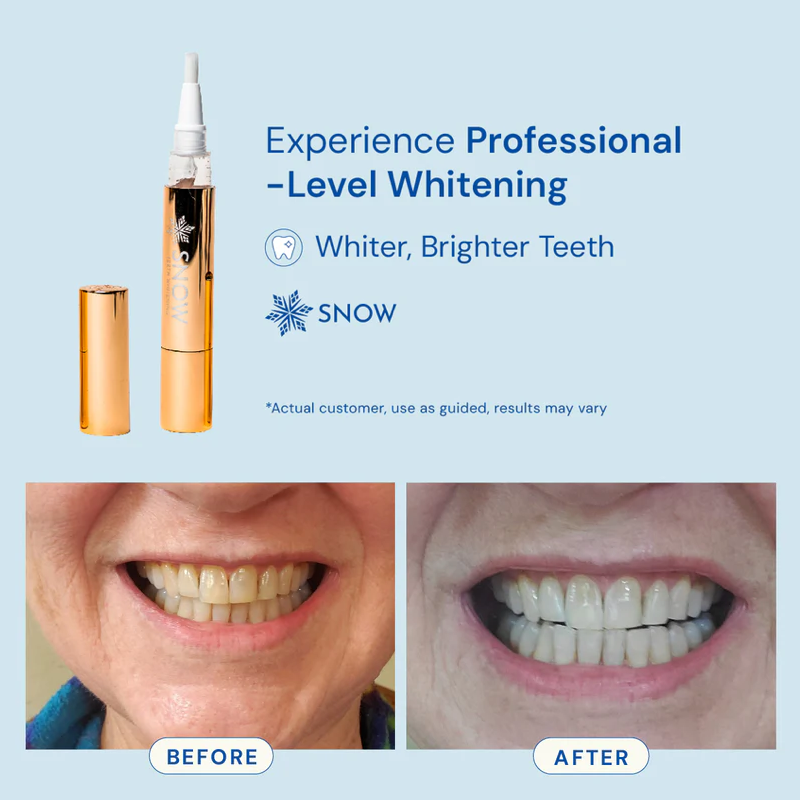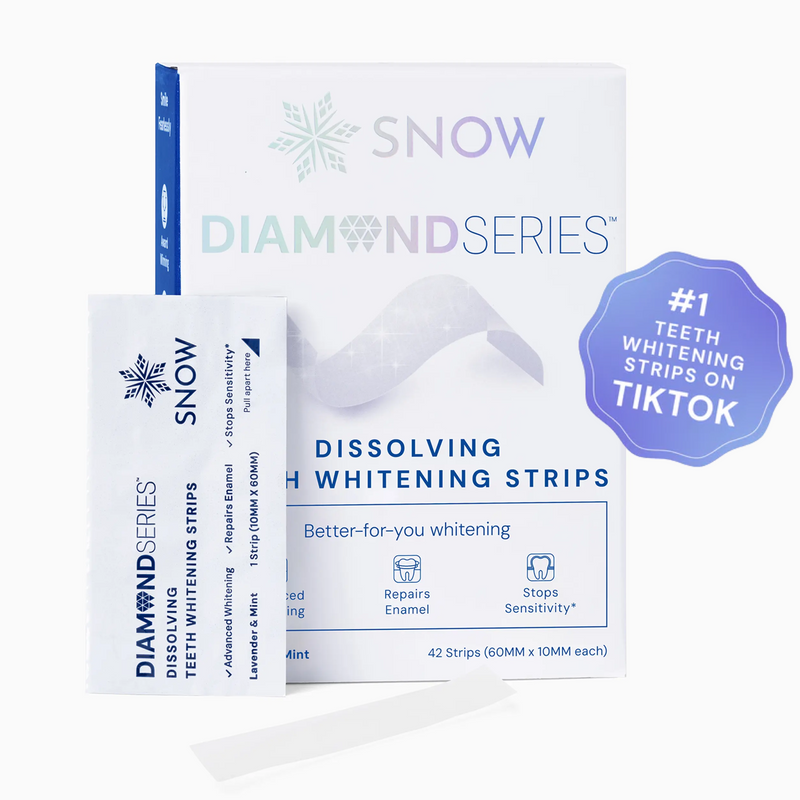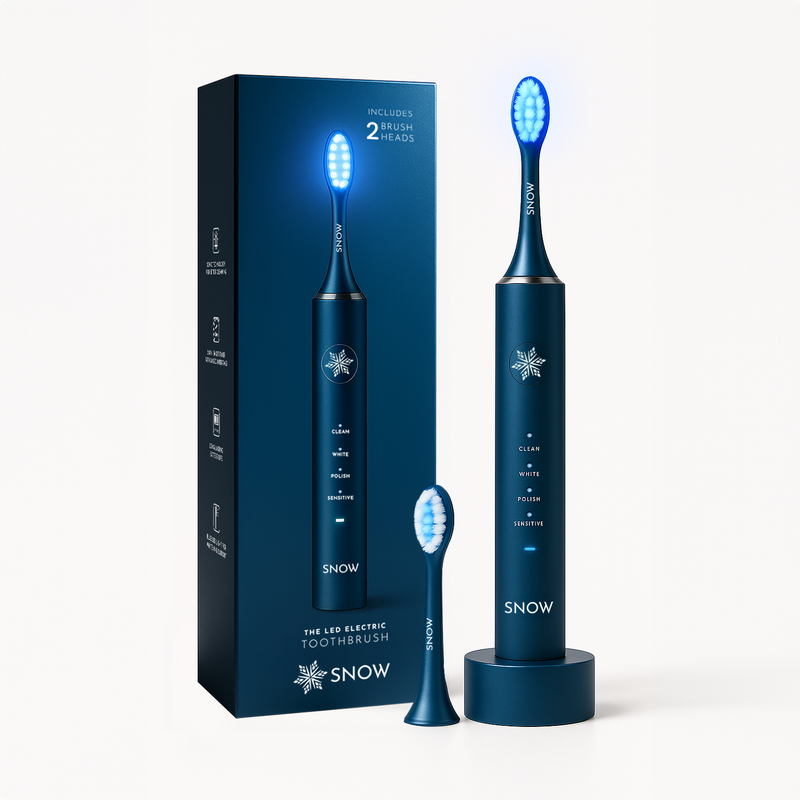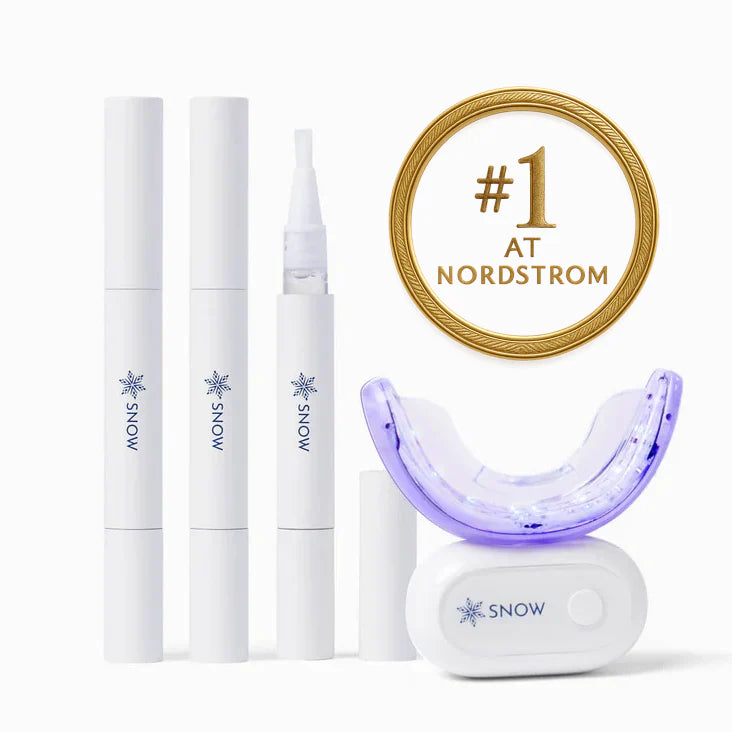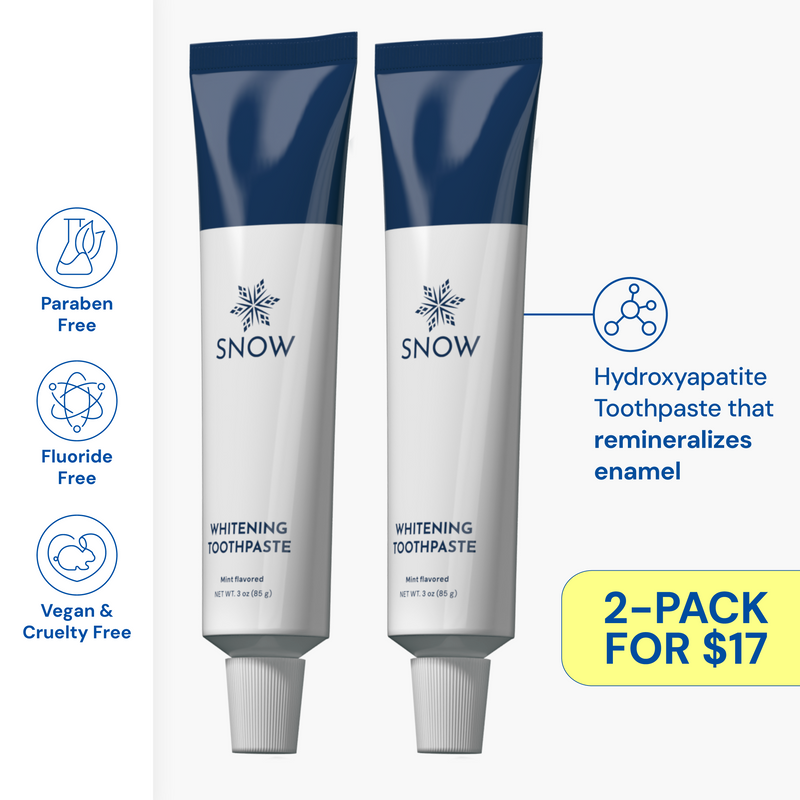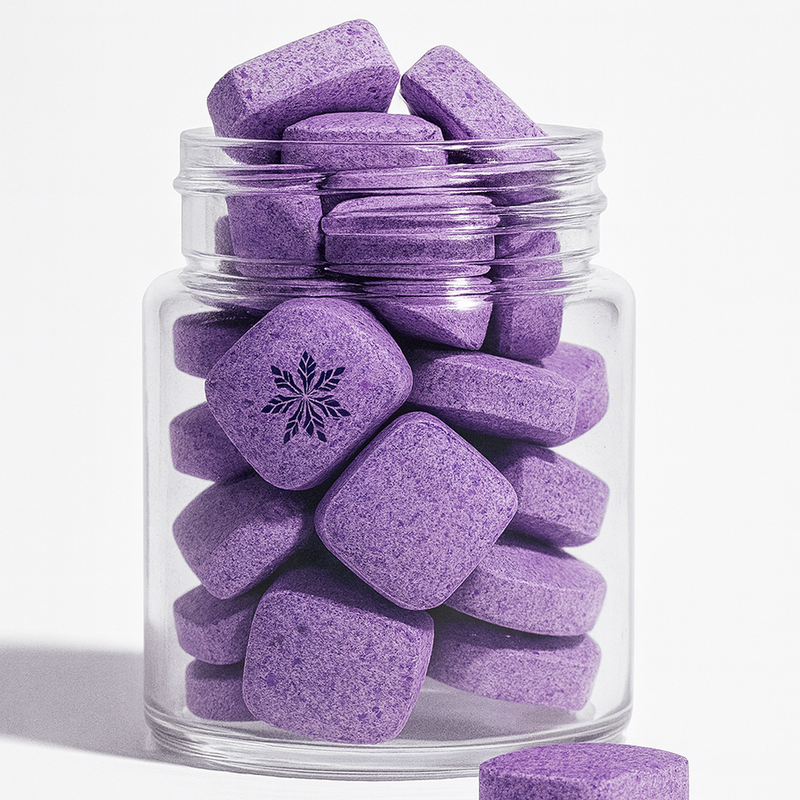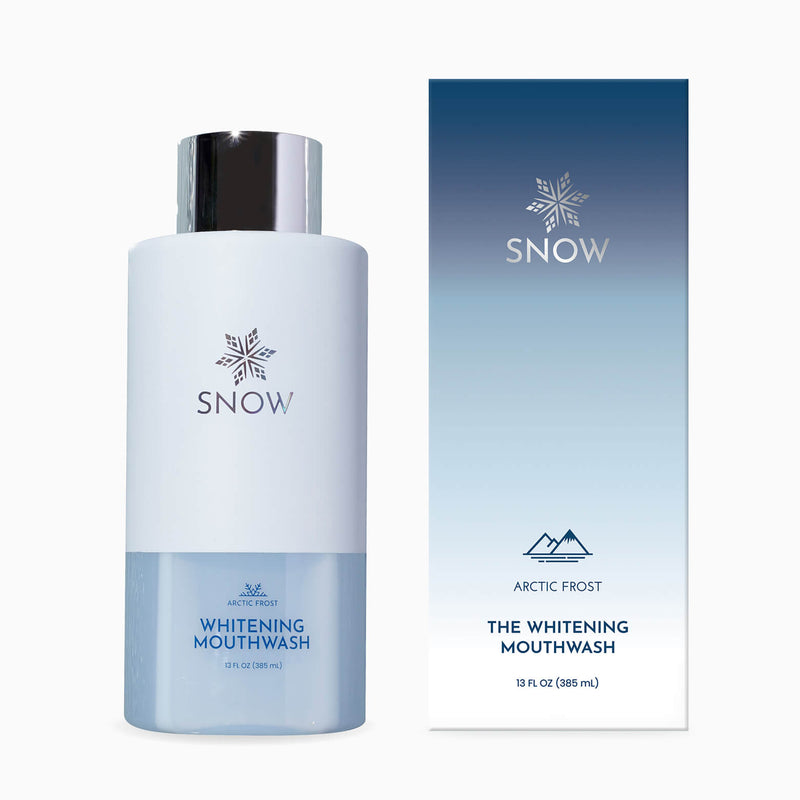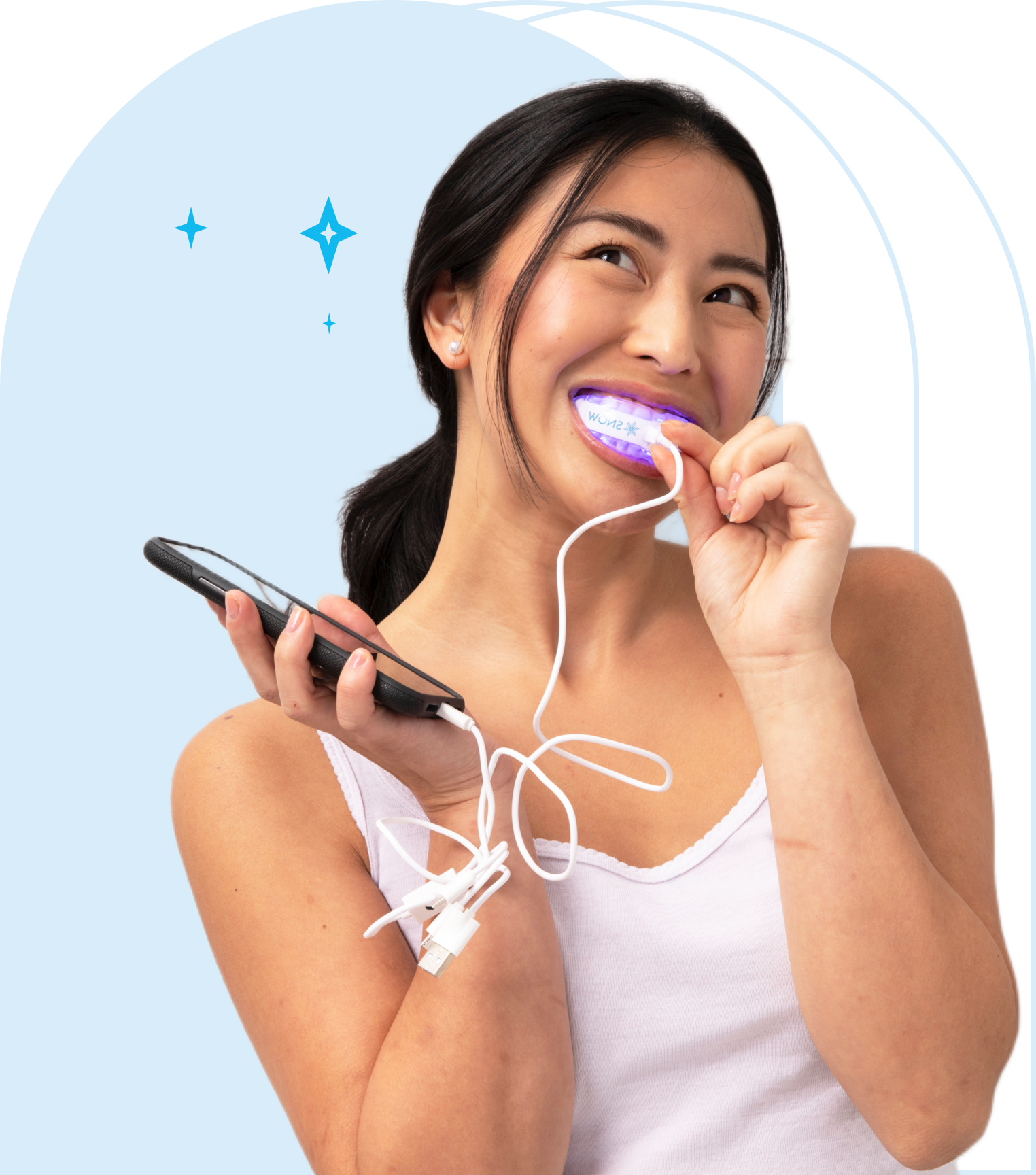Your toothbrush is your first line of defense against bacteria — but it can also become a breeding ground for germs if not cleaned properly. Your mouth is home to many different types of germs and bacteria, making it essential to maintain proper toothbrush hygiene. If you’ve ever wondered how to disinfect a toothbrush safely and effectively, this guide walks you through simple, proven methods to keep it clean. From daily quick rinses to weekly deep-clean routines, you’ll learn how to protect both your toothbrush and your oral health.
Key Takeaways
-
Disinfecting your toothbrush is vital for oral health, eliminating up to 99.9% of harmful bacteria and preventing dental issues.
-
Daily rinsing with hot water, proper air drying, and careful storage help maintain a clean toothbrush, reducing bacterial growth.
-
Incorporating weekly soaks in disinfectants like hydrogen peroxide or using UV sanitizers can significantly enhance toothbrush cleanliness and oral hygiene.
Why Disinfecting Your Toothbrush is Essential

Disinfecting your toothbrush is essential for optimal oral health. Regular sanitization can eliminate up to 99.9% of bacteria, preventing tooth decay and other dental issues caused by harmful microbes such as:
-
Streptococcus mutans
-
Staphylococcus aureus
-
Fecal matter
-
Escherichia coli
-
The flu virus
Experts say that thousands of different types of microorganisms can grow on toothbrush handles and bristles.
Not replacing your toothbrush after illness or failing to follow hygiene guidelines is a bad idea and can increase health risks.
Regularly disinfecting your toothbrush prevents bacterial growth, reducing dental issues and promoting long-term oral hygiene. It is important to note that some normal bacteria are naturally present on toothbrushes and are not harmful; these normal bacteria are part of a healthy oral environment. A clean brush ensures every stroke contributes to a healthier mouth.
For personalized advice on toothbrush hygiene and overall dental care, consider consulting your dentist.
Daily Care for a Clean Toothbrush

Keeping your toothbrush clean isn't just a matter of habit — it's essential for protecting your oral and overall health. Daily care routines can significantly reduce bacterial buildup and prevent contamination.
Rinse Before and After Use
The American Dental Association recommends rinsing your toothbrush with hot water both before and after brushing. This removes lingering food particles, softens the bristles, and helps wash away bacteria. After rinsing with hot water, follow with a quick cold rinse to firm up the bristles. Shake off any excess moisture to discourage bacterial growth.
Wash Your Hands First
Always wash your hands before brushing. This simple step prevents transferring bacteria from your hands to the toothbrush — or directly into your mouth.
Store It Correctly
Proper toothbrush storage is just as important as cleaning. Always store your brush upright in an open holder, allowing it to air dry fully between uses. Most bacteria tend to grow in dark, warm, and moist places, so it's better to let toothbrushes air dry. Avoid storing it in closed containers or drawers, which can trap moisture and encourage bacterial growth.
To prevent cross-contamination, make sure your toothbrush doesn’t touch others in the same holder. Every member of your household should have a different-colored toothbrush for identification. Keep it away from sinks and toilets, as splashes from these areas can spread germs to your brush.
Weekly Chemical Soaks

Incorporating weekly chemical soaks into your routine adds an extra layer of cleanliness. Studies have found that even after rinsing a toothbrush with water, it can still be contaminated with microorganisms. Immersing your toothbrush in mild disinfectants weekly reduces microbial contamination and supports optimal oral health.
Various solutions can be used for weekly soaks, including hydrogen peroxide, antibacterial mouthwash, and white vinegar. You can also mix two teaspoons of baking soda in one cup of water and soak your toothbrush in this solution to disinfect it. Denture cleaner is another effective option for disinfecting toothbrushes, offering a practical way to maintain cleanliness.
Hydrogen Peroxide Soak
Hydrogen peroxide is a powerful disinfectant. Soak your toothbrush head in a 3% solution for 10–15 minutes to kill bacteria and viruses.
After soaking, rinse the toothbrush thoroughly with water to remove residual hydrogen peroxide. Changing the solution daily enhances its effectiveness.
This effective method adds a robust layer of protection to your oral hygiene routine.
Antibacterial Mouthwash
Antibacterial mouthwash is another excellent disinfecting option. You can use a small cup to hold the mouthwash while soaking your toothbrush. Soak your toothbrush in mouthwash like Listerine for about 20 minutes to kill bacteria on the bristles. This method is convenient and uses products you likely already have at home.
For greater effectiveness, use a mouthwash containing 0.12%–0.2% Chlorhexidine Gluconate, proven to eliminate bacteria like Streptococcus mutans, ensuring your toothbrush remains free from harmful microorganisms.
White Vinegar Solution
White vinegar is a cost-effective, natural disinfectant. Soak your toothbrush in a 50% white vinegar solution for about 10 minutes to reduce bacterial contamination. This method is economical and uses vinegar’s natural antibacterial properties.
After soaking, shake off any lingering vinegar solution. This weekly routine keeps your toothbrush clean without expensive products.
Are UV Sanitizers Good for Toothbrushes?
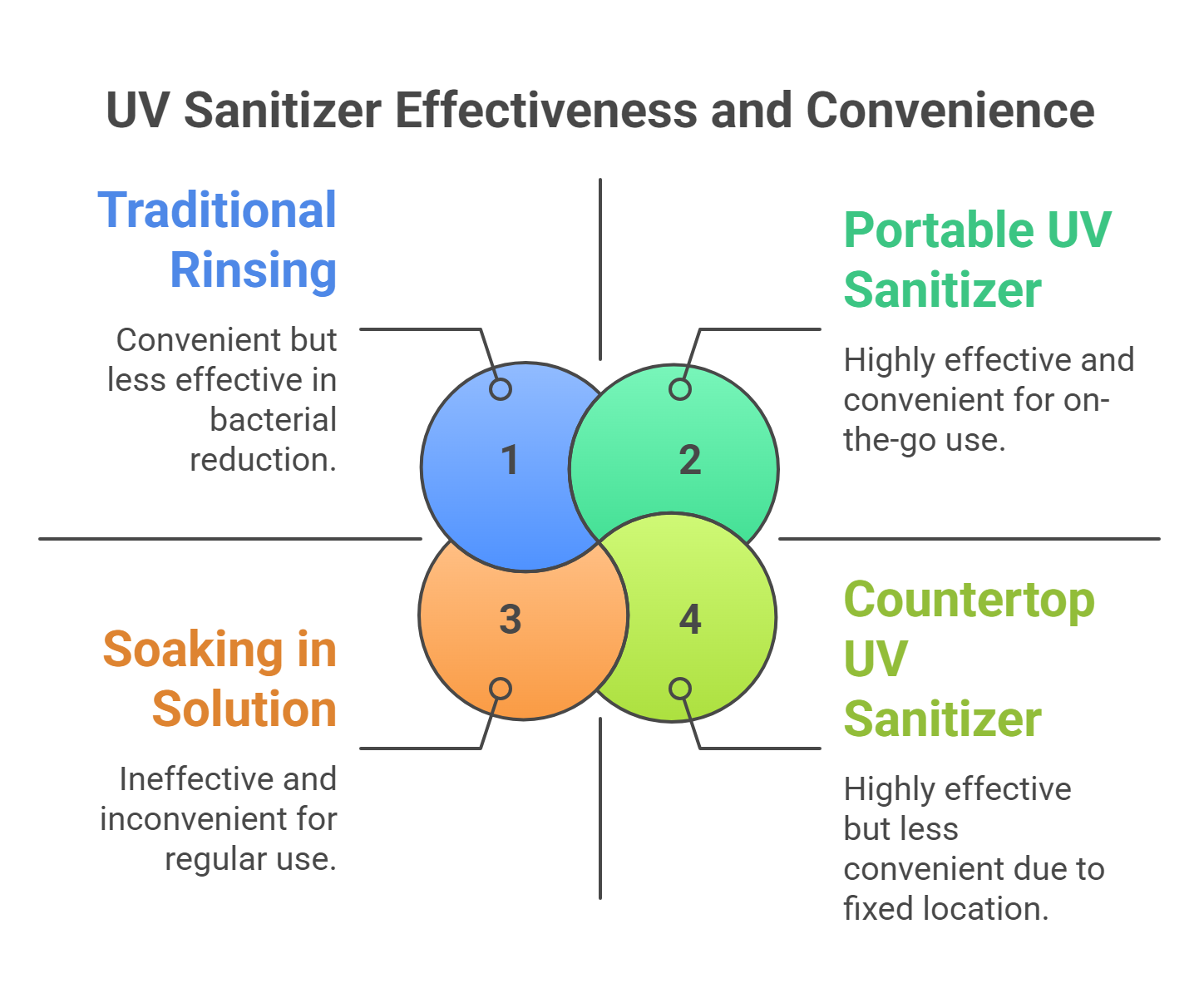
Ultraviolet (UV) sanitizers provide a high-tech, chemical-free method for disinfecting your toothbrush — and they're among the most effective tools available for reducing bacterial buildup. Compared to traditional rinsing or soaking methods, UV sanitizers can eliminate significantly more bacteria by disrupting their DNA structure, inactivating up to 99% of microbial organisms.
How UV Sanitizers Work
UV toothbrush sanitizers work by exposing the toothbrush head to short-wavelength UV light (typically UV-C) in a sealed chamber for 5 to 10 minutes. This light penetrates bacterial cells and disrupts their DNA, rendering them inactive and unable to reproduce.
Before placing the toothbrush inside, make sure the bristles are visibly clean — UV light is most effective when applied to a clean surface, free from toothpaste residue or debris.
Benefits of Using a UV Toothbrush Sanitizer
UV sanitizers are valued for both their effectiveness and convenience. Benefits include:
-
High efficacy: Inactivates up to 99% of bacteria
-
Chemical-free disinfection: Ideal for users who prefer a non-toxic solution
-
Time-efficient: Most sanitizers require only 5–10 minutes
-
Versatile design: Available in countertop models or portable travel cases, making them easy to integrate into any lifestyle
-
Daily use-friendly: Safe and simple enough for regular incorporation into your oral care routine
Important Considerations
Although UV sanitizers are highly effective, they’re not essential for everyone. For many people, proper rinsing with hot water, letting the brush air-dry, and safe storage are sufficient to maintain a hygienic toothbrush. The American Dental Association notes there is insufficient clinical evidence to support that bacterial growth on toothbrushes will lead to specific adverse oral or systemic health effects.
There are a few things to keep in mind:
-
Long-term use may wear down bristles slightly over time due to UV exposure
-
They should complement, not replace, basic hygiene practices like rinsing and storage
-
UV sanitizers may be most beneficial for individuals with compromised immune systems or those wanting to go the extra step in oral hygiene
UV toothbrush sanitizers offer a reliable, advanced way to minimize bacteria on your toothbrush and can be an excellent add-on to your daily routine — especially for those who prioritize clean tools and modern oral care. While not mandatory, they can enhance your efforts to keep your brush (and mouth) as germ-free as possible.
Ultraviolet (UV) sanitizers offer a high-tech solution for disinfecting toothbrushes. UV light is the most effective method for reducing bacterial count, surpassing saline and chlorhexidine gluconate solutions. UV sanitizers can eliminate more bacteria than traditional rinsing or soaking methods. UV sanitizers inactivate up to 99% of bacteria by disrupting their DNA.
Heat-Based Methods for Disinfecting
Heat-based methods are effective for disinfecting your toothbrush. High temperatures kill bacteria, whether you use boiling water or a dishwasher, ensuring your toothbrush remains germ-free.
Let’s explore two common heat-based methods: the boiling water method and the dishwasher cycle.
Boiling Water Method
Boiling water is a simple, powerful disinfectant. Submerge your toothbrush bristles in boiling water for 2–3 minutes to kill most bacteria. This method is easy and requires no special equipment.
Be cautious not to leave the toothbrush in boiling water too long, as it can warp the plastic. Regular use of this method keeps your toothbrush clean and germ-free.
Dishwasher Cycle
The top-rack cycle of your dishwasher can also sanitize your toothbrush. Place it on the top rack and run it through the rinse and drying cycles to eliminate bacteria and debris.
High temperatures can cause the bristles to fray over time, but the dishwasher cycle is a convenient way to periodically disinfect your toothbrush.
How Often to Replace Your Toothbrush and Best Practices for Safe Storage
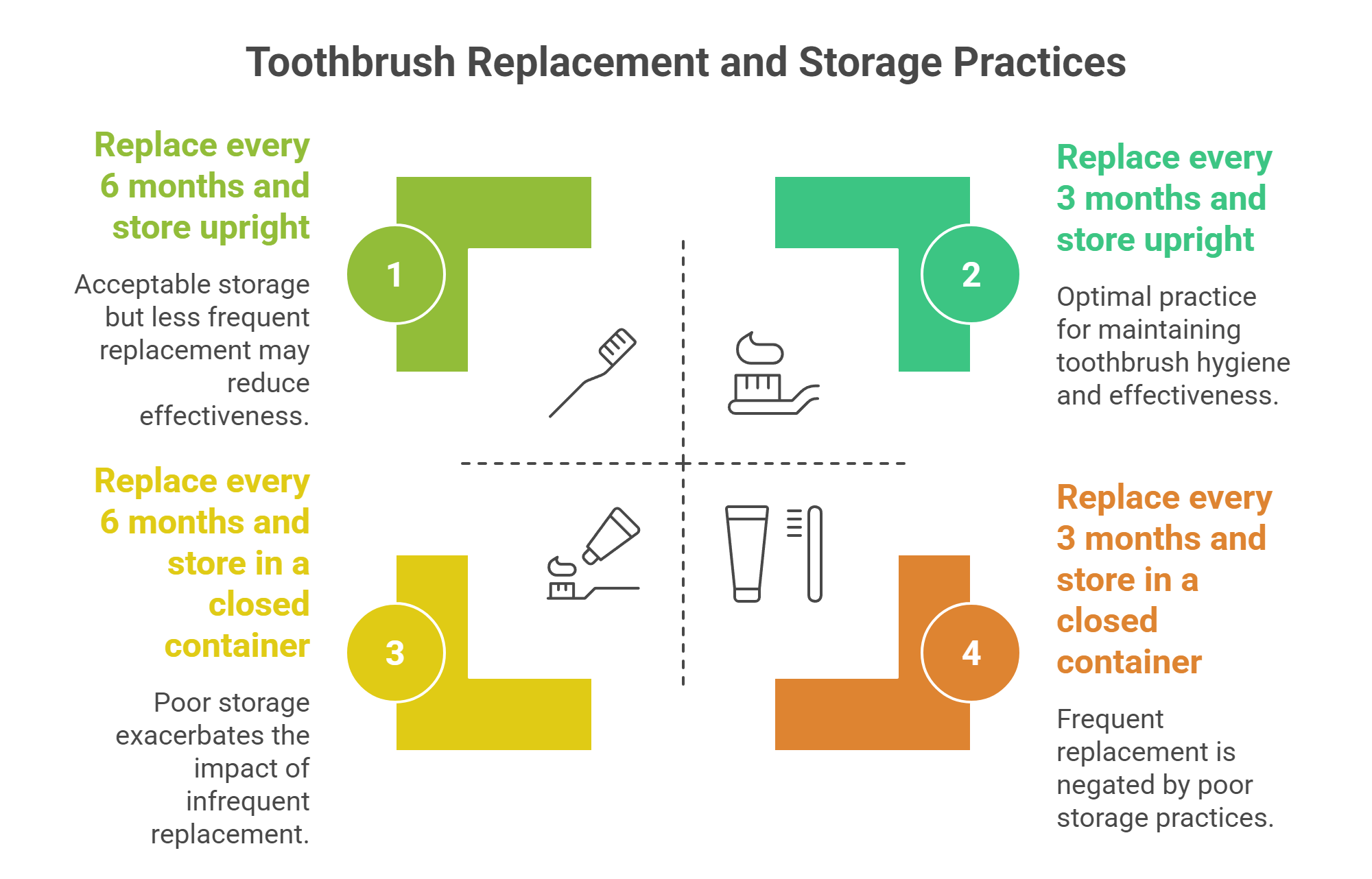
Knowing when to replace your toothbrush — and how to store it correctly — is a small but important part of maintaining your oral health. These simple habits help reduce bacteria buildup and ensure your toothbrush stays effective with every use.
How Often Should You Replace Your Toothbrush? For more specific signs to watch for, especially with electric models, check out our guide on how to know when your electric toothbrush is dying.
-
Replace every 3–4 months: Over time, bristles become worn and less effective at cleaning your teeth and gums.
-
Replace sooner if bristles are frayed: Fraying can reduce cleaning power and irritate gums.
-
Replace after illness: If you've been sick, swap your toothbrush to avoid reintroducing germs back into your mouth.
Regularly checking your toothbrush for wear ensures you’re getting the most out of your brushing routine — and protecting your overall health.
Extra Tip: Rotate Between Two Brushes
Using two toothbrushes and alternating between them allows each one to dry completely between uses. This simple trick can reduce moisture-related bacterial buildup and extend the life of both brushes.
Safe Toothbrush Storage Tips
-
Store upright in an open holder to allow full air dryin
-
Keep toothbrushes from touching to prevent cross-contamination — especially in shared spaces
-
Use different colors for household members to avoid mix-ups
-
Keep it away from toilets and sinks — ideally, six feet or more — to limit exposure to airborne contaminants
-
Avoid closed containers, which trap moisture and encourage bacterial growth
Following these tips helps keep your toothbrush hygienic, your mouth healthier, and your daily routine germ-conscious.
Special Considerations During Illness
When someone in the household is ill, extra care is needed to prevent infection spread. Use separate toothbrushes for sick family members to reduce cross-contamination. Replace toothbrushes more frequently during illness to maintain hygiene.
If you experience recurring oral infections or illness, consult your dentist for appropriate treatment and advice on toothbrush hygiene.
Let’s explore how to disinfect your toothbrush after an illness and tips to prevent cross-contamination and toothbrush contamination.
Disinfecting After Illness
After an illness, disinfect your toothbrush thoroughly to prevent reinfection. Viruses, like the flu, can survive on moist surfaces, making it crucial to sanitize your toothbrush. Soak the toothbrush in hydrogen peroxide to kill bacteria and viruses, or use antibacterial mouthwash to eliminate harmful microorganisms.
Replace your toothbrush after recovering from a contagious disease to ensure optimal hygiene. Keep the toothbrush holder clean and free from contamination to maintain a germ-free environment. It’s important to replace your toothbrush after being sick.
Preventing Cross-Contamination
Preventing cross-contamination is essential, especially in group settings or households with multiple members. Never share toothbrushes to avoid spreading bacteria and viruses. Ensure each family member has a clearly labeled toothbrush.
To prevent contamination from the toothpaste tube, dispense a pea-sized amount onto wax paper before applying it to the toothbrush. This keeps the toothpaste tube germ-free, enhancing your oral hygiene routine.
Summary
Keeping your toothbrush clean is a small habit that makes a big difference in your oral health. Daily rinsing, proper storage, and regular disinfection — whether with UV light, heat, or a gentle soak — all help reduce bacteria and keep your brush hygienic. Don’t forget to replace your toothbrush every 3–4 months or after illness for best results.
If you’re looking to take your toothbrush care to the next level, SNOW offers sleek, modern oral care tools — including toothbrushes and UV sanitizers designed to keep your smile as clean as it is bright.
Frequently Asked Questions
How often should I replace my toothbrush?
You should replace your toothbrush every three to four months, or sooner if the bristles are frayed or if you've been ill. Maintaining a fresh toothbrush is crucial for optimal oral hygiene.
Can I use antibacterial mouthwash to disinfect my toothbrush?
You can use antibacterial mouthwash to disinfect your toothbrush by soaking it for about 20 minutes, which effectively kills bacteria on the bristles. This method can help maintain oral hygiene.
Is it safe to use a dishwasher to clean my toothbrush?
While using a dishwasher can sanitize your toothbrush, the high temperatures may cause the bristles to fray over time. It's better to clean your toothbrush manually with hot water and soap for better maintenance.
What is the best way to store my toothbrush to prevent contamination?
To prevent contamination, store your toothbrush upright in an open holder, ensuring it does not come into contact with other toothbrushes and is positioned at least six feet away from the toilet.
Should I disinfect my toothbrush after being sick?
Disinfecting your toothbrush after being sick is essential to prevent reinfection. Soak it in hydrogen peroxide or antibacterial mouthwash, and consider replacing it for added safety.















































